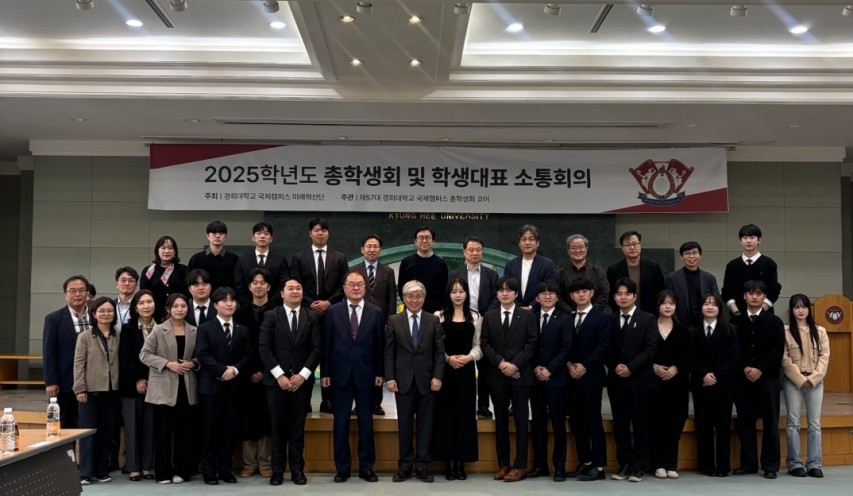[Opinion] Communication Meeting: Form Over Substance
In April 2025, Kyung Hee University (KHU) Global Campus held its Communication Meeting at the Central Library. This biannual gathering, established in 2019, aims to facilitate dialogue between student representatives and university staff. However, the meeting still seems far from achieving its primary purpose—resolving campus problems through direct communication.

2025-1 Global Campus Communication Meeting
Identifying Concerns Without Resolution
The Communication Meeting is merely a forum for sharing concerns rather than developing practical solutions. For example, regarding the deteriorating tiles in the College of Life Sciences’ building, KHU staff provided only a contextual explanation. When students inquired about repair feasibility, the staff responded: “We cannot make an immediate response as these tiles are no longer available for purchase. We will address it further once certain processes are completed.”
Notably, this pattern continues to persist. The College of Life Science building’s exterior wall is an example, where KHU staff offered
the same apology with a familiar promise: “We will do our best to resolve it.” As this pattern appears similarly in other agendas for a while, such as campus dualization and participation of dormitory management committee, indicating the meeting works only in identifying concerns while failing to generate practical solutions.
Too Many Topics in a Limited Time
The root cause of this issue lies in the meeting’s fundamental structure. In this year’s meeting, only three hours were given to discuss 33
agenda items—college representatives had five minutes of presenting time respectively, and the General Student Association (GSA) had to address 20 agenda items within just 90 minutes. For the staff, this structure provided insufficient time to address all details thoroughly.
This limitation was first identified when the meeting began in 2019. The 2020 GSA posted a statement to the KHU staff, stating, “The CommunicationMeeting did not produce practical results. We hope to receive feasible solutions, including detailed plans and budget information.” This demonstrates that it is difficult to solely rely on meetings to solve the real issue.
Breaking the Stalemate
To overcome limitations, addressing agendas consistently is essential. Student representatives must follow up on the progress of discussed issues after the meeting. Furthermore, for long-standing issues, the Communication Meeting needs to serve as a forum to discuss the progress and future action plans. Otherwise, the campus issue will continue indefinitely.
Broader student engagement is also essential. Greater student attention will push the University and student representatives to address campus issues. Students are, therefore, key to overcoming the restrictive structure.
The Communication Meeting struggles to function as a practical problem-solving forum because of its superficial nature. Addressing this limitation requires ongoing efforts to examine issues in depth. Specifically, student engagement at each step is crucial for achieving meaningful progress.
There are no registered comments.
I agree to the collection of personal information. [view]

